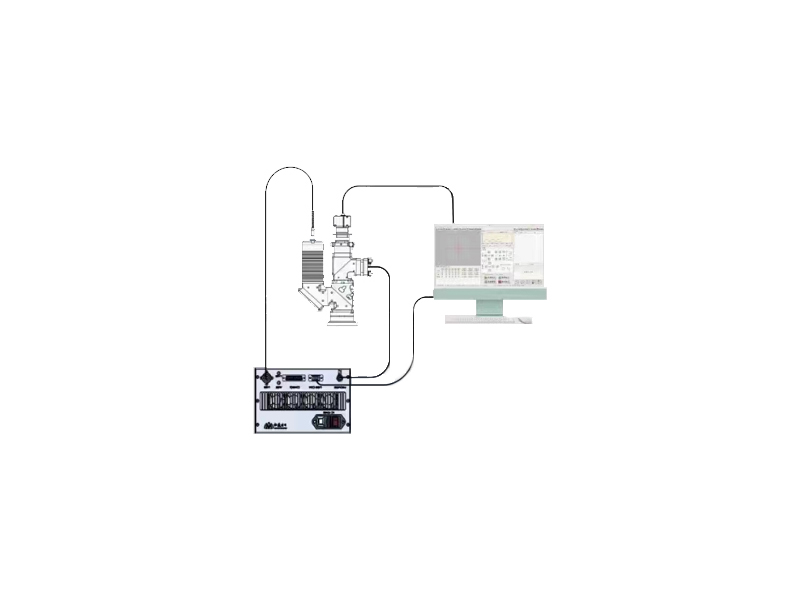The suitable temperature range for laser soldering is 100-400℃. Numerous information on the Internet shows that the laser soldering system can achieve constant control of the solder joint temperature, and can directly input the set temperature. It also has a real-time temperature feedback system to ensure temperature stability and accuracy during the welding process. In addition, the temperature error of these systems is controlled within ±5℃ and the response speed is 20μs, which can effectively monitor and adjust the welding temperature to ensure welding quality and efficiency. Therefore, based on many years of sample testing experience of Songsheng Optoelectronics engineers, it can be determined that the optimal temperature range for laser soldering is 100-400°C.

What is the optimal temperature range for laser soldering to ensure welding quality and efficiency?
The optimal temperature range for laser soldering is mainly between 100℃ and 400℃. During the laser soldering process, the solder joint temperature can be continuously adjusted within the range of 100-400°C, and has precise temperature control function, with the error controlled within ±5°C.
In addition, the laser temperature during the tin feeding process should be higher than the preheating temperature, such as starting from 370°C.
Comprehensive consideration, in order to ensure welding quality and efficiency, the optimal temperature range for laser soldering should be set between 100°C and 400°C.
During the laser soldering process, what are the effects of different temperatures on the welding materials?
Changes in thermal physical properties of materials: As the temperature increases, the thermal physical properties such as thermal expansion coefficient, melting point and solidification speed of welding materials will change. These changes directly affect welding quality, such as weld formation and structural stability. Flux fluidity: An increase in temperature will increase the fluidity of flux. At the right temperature, flux is better able to mix with solder, resulting in improved soldering strength and reliability. However, if the temperature is too high, it may cause the flux to decompose or volatilize, affecting the welding effect.
Laser absorptivity: The material's resistivity and surface state (such as smoothness) will affect its laser absorptivity, and these parameters will change with temperature. Therefore, by controlling the laser power and welding time, the heating speed and depth of the material can be precisely controlled, thereby optimizing the welding process.
Preheating and continuous heating stage: During the laser soldering process, preheating is first performed to reach the preset temperature, and then heating is continued to complete the welding. Temperature control during this process is critical to ensuring welding quality. Improper temperature control can lead to welding defects such as porosity, cracks, or uneven welds.
Temperature feedback system: Modern laser soldering systems are usually equipped with a temperature feedback system, which can monitor the temperature of the welding area in real time and automatically adjust the laser power according to the set program to maintain temperature stability during the welding process. This helps reduce welding defects caused by temperature fluctuations.

How does the Songsheng Optoelectronics real-time temperature feedback system work?
Real-time temperature feedback system: This system can monitor temperature changes during the welding process in real time and automatically adjust the laser output power according to the set temperature parameters to maintain a constant temperature in the welding area. This system usually uses PID (proportional-integral-derivative) control algorithm to optimize temperature control and ensure welding quality.
CCD coaxial positioning system: This system uses a high-resolution CCD camera to accurately position the welding position, ensuring that the laser can accurately focus on the predetermined welding point, thus improving the welding accuracy and yield rate.
Constant temperature semiconductor laser: This laser provides a stable and efficient heat source and is the key to achieving precise temperature control. It heats up and cools down quickly, making it suitable for high-speed welding operations.
Intelligent soldering software: This software supports multiple file formats and can be integrated with other systems to achieve data exchange and processing. In addition, it can display welding status and temperature information in real time to help operators better control the welding process.
Temperature adjustment feedback system: This is an original system that can adjust the temperature online to ensure temperature stability during the welding process, thereby improving product quality and production efficiency.

In laser soldering, how to effectively control the temperature error to improve welding accuracy?
Real-time temperature monitoring and feedback: Use infrared detection to monitor the thermal radiation of the laser to the workpiece in real time, and adjust the laser power and other parameters through the closed-loop control system to maintain the temperature stability of the welding area. This method can realize automatic adjustment function through PID controller.
Advanced optical system and software integration: Use advanced optical systems (such as multi-axis servo motion systems, semiconductor lasers and their control systems) and advanced software to monitor and adjust the temperature during the welding process in real time. These systems often include integrated temperature feedback, positioning and indicator lights to ensure weld quality.
Open-loop and closed-loop hybrid control strategy: Use a model-based open-loop control method in the preheating stage to achieve the target temperature, and then switch to closed-loop control during the welding process to adapt to actual welding conditions and environmental changes. This helps reduce temperature fluctuations due to environmental factors.
Temperature control module and software settings: Many modern laser welding equipment are equipped with temperature control modules. These modules can set specific temperature values and automatically sense the actual temperature to avoid welding failure due to uncontrollable temperature.
High-precision temperature control system: Choosing a system with high-precision temperature control capabilities, such as a system with an error control within ±5°C and a response speed of 20μs, can significantly improve welding accuracy and efficiency.
In short, temperature control during the laser soldering process is a key factor in ensuring welding quality.
Contact: Mr.Xiao
Phone: +86-13385280662
E-mail: market001@whlaser.cn
Add: Room 02, Floor 5, Building 9, Gezhouba Sun City, No. 40, Gaoxin 4th Road, Donghu New Technology Development Zone, Wuhan